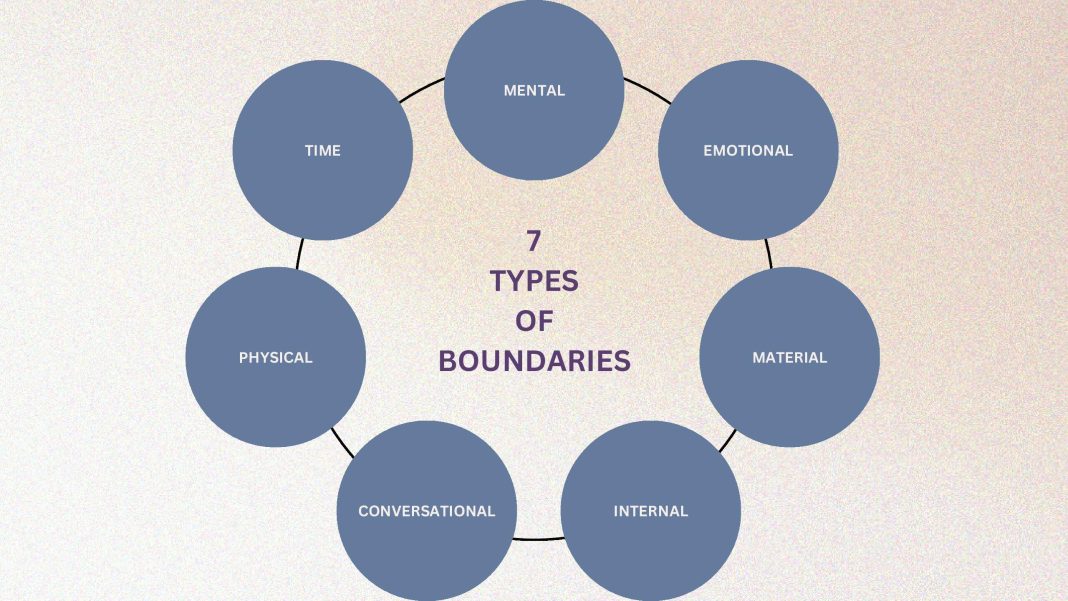In the intricate dance of human relationships, emotional boundaries serve as the invisible choreography that guides our interactions, ensuring harmony and balance. Yet, in a world that often blurs the lines between personal space and communal connection, establishing these boundaries can feel like an elusive art. Whether navigating the complexities of friendships, family ties, or professional relationships, the ability to set and maintain healthy emotional boundaries is crucial for personal well-being and mutual respect. This article delves into practical tips for crafting these essential boundaries, offering insights and strategies to help you foster healthier, more fulfilling connections. By understanding and implementing these guidelines, you can create a supportive environment that honors both your own emotional needs and those of others, allowing for relationships that thrive on trust and mutual understanding.
Understanding Emotional Boundaries and Their Importance
Establishing healthy emotional boundaries involves recognizing and respecting your own needs and feelings, as well as those of others. This requires a conscious effort to delineate what is acceptable and what is not in your interactions and relationships. Here are some practical tips to help you build these boundaries:
- Self-awareness: Understand your emotions and triggers. Identifying what makes you uncomfortable or overwhelmed is the first step toward setting boundaries.
- Clear communication: Express your needs and limits clearly and assertively. Let others know what you expect and what you cannot tolerate.
- Consistency: Maintain your boundaries consistently. This helps reinforce them over time and ensures that others take them seriously.
- Respect for others: Acknowledge and honor the emotional boundaries of those around you. This mutual respect fosters healthier and more supportive relationships.
By integrating these practices into your daily life, you can create a balanced emotional environment that promotes both personal growth and healthier interpersonal connections.

Recognizing and Respecting Your Personal Limits
Understanding your personal limits is essential in establishing emotional boundaries. It’s about recognizing what feels comfortable and what doesn’t, and allowing yourself the space to say “no” when necessary. Here are some practical steps to help you identify and honor your personal limits:
- Self-awareness: Regularly check in with yourself to assess how you’re feeling both physically and emotionally. Journaling can be a helpful tool to track patterns in your energy levels and stressors.
- Mindful communication: Clearly express your needs and boundaries to others without feeling guilty. Remember, setting boundaries is a form of self-care, not selfishness.
- Time management: Allocate time for activities that recharge you. Whether it’s a hobby, exercise, or simply resting, ensure your schedule respects your need for balance.
- Listen to your body: Pay attention to physical cues that indicate you’re reaching your limit, such as fatigue or tension, and allow yourself to step back and recharge.
 Effective Communication Strategies for Boundary Setting”>
Effective Communication Strategies for Boundary Setting”>
Effective Communication Strategies for Boundary Setting
Establishing clear emotional boundaries is a vital skill for maintaining healthy relationships and personal well-being. To effectively communicate your boundaries, it is essential to be both assertive and compassionate. Begin by clearly defining your limits internally before expressing them to others. Use “I” statements to communicate your needs, which can help in conveying your message without sounding accusatory. For example, instead of saying “You always interrupt me,” try “I feel unheard when I’m interrupted.”
Incorporate these strategies to enhance your boundary-setting communication:
- Be direct yet respectful: Clearly articulate your boundaries without ambiguity. Respect for yourself and others fosters mutual understanding.
- Practice active listening: Ensure that you also listen to the other person’s perspective, showing empathy and openness to dialogue.
- Stay consistent: Reinforce your boundaries consistently. Inconsistency can lead to confusion and weaken the boundaries you’ve set.
- Use positive language: Frame your boundaries in a positive manner, focusing on what you need rather than what others should stop doing.
By employing these strategies, you can create a balanced communication approach that respects both your needs and those of others, paving the way for healthier interactions.

Maintaining Boundaries with Compassion and Consistency
- Understand Your Limits: Before you can communicate your boundaries to others, it’s essential to clearly define them for yourself. Reflect on past experiences to identify what makes you feel uncomfortable or drained, and use these insights to establish your personal limits. Knowing your boundaries will help you articulate them with clarity and confidence.
- Communicate Clearly and Kindly: Once you understand your boundaries, the next step is to express them to others. Use “I” statements to focus on your feelings and needs, which can help reduce defensiveness. For example, saying “I feel overwhelmed when my work time is interrupted” is more effective and less confrontational than “You always interrupt me when I’m working.”
Practicing consistency is key to maintaining boundaries over time. It can be tempting to relax your limits in the face of pressure or guilt, but doing so can lead to confusion and resentment. Stand firm in your boundaries by gently but firmly reminding others of them when necessary. This consistency not only reinforces your own emotional health but also fosters respect from those around you.
- Be Open to Dialogue: While it’s important to stand firm, it’s equally crucial to remain open to discussions. Sometimes, others may not understand your boundaries right away, or there might be a need for negotiation. Approach these conversations with an open mind, ready to listen and adapt when appropriate, while still honoring your core needs.
- Practice Self-Compassion: Remember that setting boundaries is a learning process, and it’s okay to make mistakes. Be gentle with yourself if you find it challenging to maintain your boundaries at times. Reflect on these experiences, learn from them, and continue to refine your approach.








